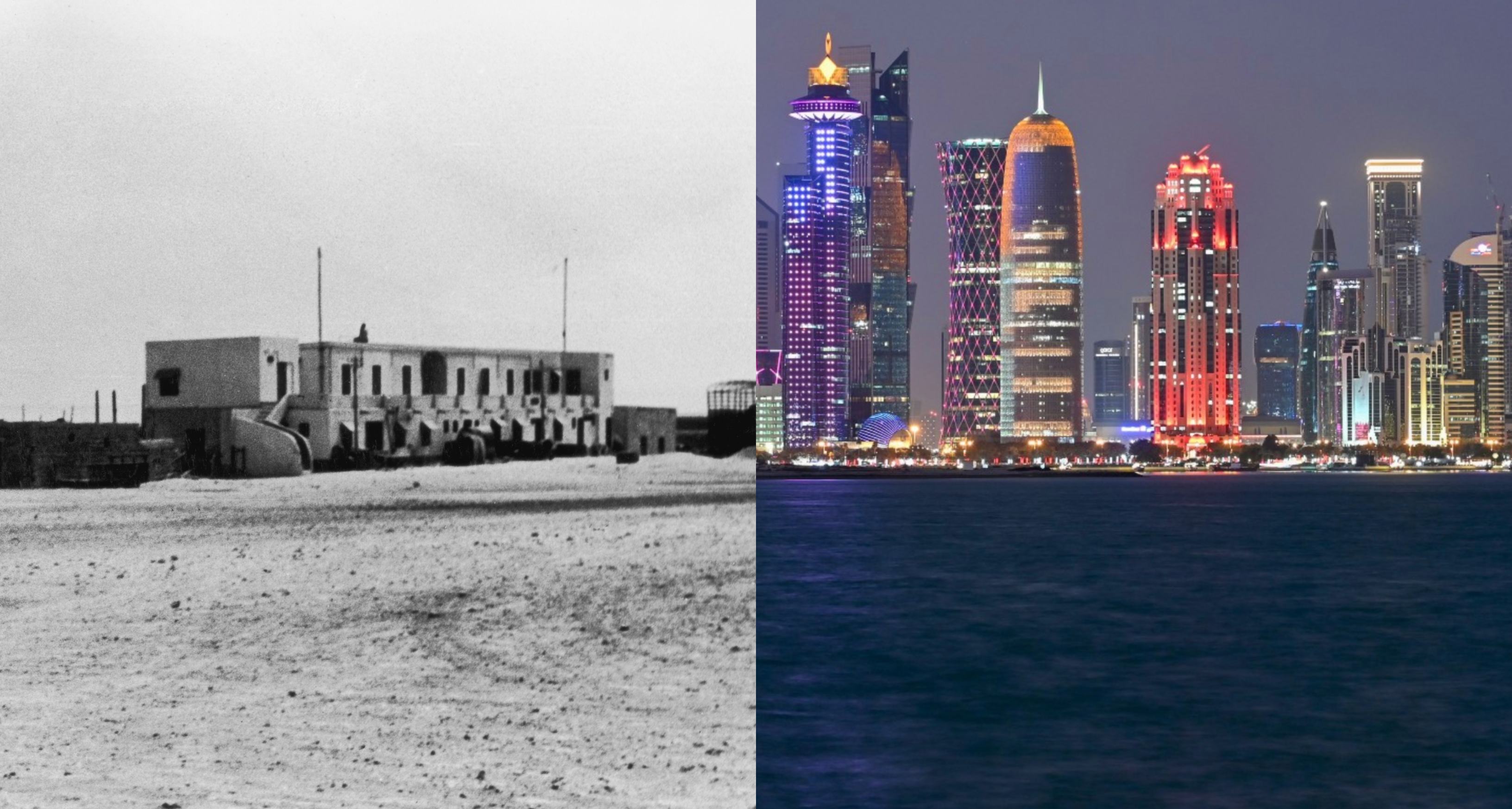(CNN Spanish) — The futuristic city of Doha, the capital of Qatar, is located on the shores of the Persian Gulf and stretches east of the desert peninsula, projecting an image of a jungle of tall, modern skyscrapers and cutting-edge technology. But it wasn’t always like this.
At the time of its independence, the 1971in Qatar 120,000 people lived. Now the number is nearly three million.
It was a very different Qatar, with small towns and a capital city growing up in the middle of the desert.
But thanks to oil and gas, the country began a real transformation in the second half of the 20th century, which has been pronounced in recent decades.
This is how Qatar went from being a small and poor pearl producer to a powerhouse known for its futuristic capital.
Population growth of Qatar
in Doha 1,186,023 people are currently livingThat is, roughly one-third of the country’s total, stable Out of 2,985,029 people – Mostly Migrant workers-According to official statistics.
But if you count its surroundings, which include the cities of Al Rayan, Al Waqra, Al Tayen and Umm Slal, The population is over 2.5 millionThat is, almost 85% of the country’s total is concentrated in this coastal region.
Qatar’s population growth has exploded in recent decades. Population of the country ten years ago reached 1,836,676 people, Instead of the current nearly three million. In 2002, two decades ago, it was Just 640,872.
A group of men sit on the street outside Doha, the capital of Qatar, in September 1953. (Credit: Keystone Features/Halton Archive/Getty Images)
In 1971, when Qatar gained independence from the United Kingdom, there were only 120,000 people.
Importance of oil and gas
At the beginning of the 20th century, Qatar was a poor territory, devoted mainly to them. Collection and cultivation of pearls, and their trade.
But Qatar’s first oil wells They were discovered in 1939And its exploitation started in 1949.
In the decades that followed, especially from the 1950s and 1960s, the country began to grow rapidly on the back of these revenues, much of its current wealth coming from the South Pars-North Dome natural gas field located in the Persian Gulf. and shared with Iran.

A poster of Cameroonian goalkeeper Andre Onana adorns a building in the Qatari capital Doha, ahead of the World Cup soccer match on August 16, 2022. (Credit: MUSTAFA ABUMUNES/AFP via Getty Images)
After independence and Nationalization In the 1970s, Qatar Petroleum, now a state-owned company, had one of the highest per capita incomes in the world.
Today Qatar’s real GDP per capita is about $93,500, according to Information of the World Bank. Thus, it will be The sixth richest country in the worldBehind Liechtenstein, Monaco, Luxembourg, Singapore, and Ireland, according to the CIA World Factbook.
Doha, the city of the future
Qatar’s capital is the most striking symbol of this exponential growth in wealth and population: in the heart of Doha Skyscraper High-rise, modern design and high-tech set the pace for the city.
Some of the world’s leading architects — such as Chinese-American Ayo Ming Pei design Museum of Islamic Art – commissioned by Qatari companies in recent years to shape today’s Doha, it incorporates sustainability into its designs.
Msheireb properties, for example, was behind the development of Doha’s new hubThe US$5.5 billion investment sought to reduce the city’s carbon footprint by keeping the number of cars to a minimum and using microclimatic effects to keep the environment cool.
However, with an economy based on oil and gas extraction, Qatar still has a long way to go in taking care of the environment: the countryWorld’s largest per capita carbon footprint.
Underground, in addition, the Doha Metro circulates: an advanced A driverless transportation system It opened in 2019 but is still under construction as part of an ambitious regional project.
with the information that CNN




